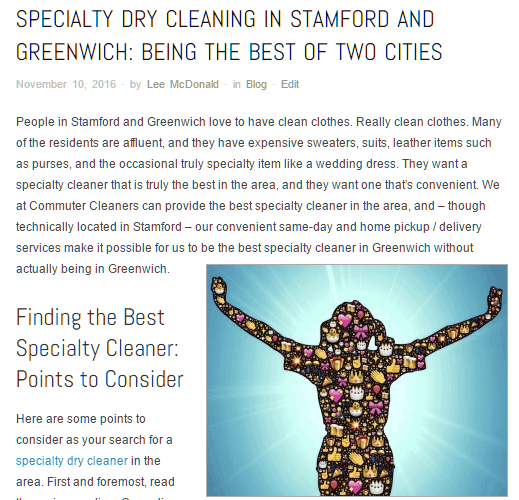Press releases have been controversial, to say the least, as a tactic for SEO. However, with a little finesse that can be a useful tool in your toolbox.
In this video, we’ll dive into how to write an SEO-friendly press release, and to use press releases as an easy (but low quality) link-building tactic. Let’s get started!
- Watch the Video
- Links and Resources (scroll down below the video)
Watch ‘How to Use Press Releases for SEO‘ on YouTube!
Why Write Press Releases for SEO?
First, let’s step back and see that a Press Release on your website – to Google – is really just like a Blog post. It’s “fresh content.” Why should you write press releases? For the same reasons, you should blog. (See the blog post and video, here, on how to write a strong SEO-friendly blog post. The same principles apply to a press release). Here are the three primary reasons you need to write press releases for SEO  –
–
- A blog / press release sends a “freshness signal” to Google. Google clearly rewards websites with NEW content, and each blog post sends an “I’m alive” signal to Google. It’s important not only to write blog posts but to have one-click links to the new blog posts from your Home Page.
- A blog / press release allows you to create “micro” content. While your landing pages, should be your BIG keyword phrases (high volume / high value), you can blog on any tiny esoteric content you want, so you can use your blog posts to rank for your micro topics or short tails (vs. using your home page and your landing pages to rank for your major keyword phrases).
- Blog posts / press releases allow you to link “up” to your landing pages, and thereby support them. Again, this is a freshness signal, supporting your major landing pages (similar to the general freshness purpose of blogging).
Syndication and SEO: The Reason Press Releases Help SEO
Finally, and here’s what’s really exciting – a press release has some extra features if you use a syndication service like PRLOG.org or PRWeb.com –
- The press release can rank – on its own – on Google. You can “host” your press release on a service like PRWEB.com and it can actually rank / outrank your own content and/or duplicate it on Google. So you can get BOTH a press release AND a landing page to rank on Google in some very lucky situations.
- Press releases that are syndicated can be used to generate a lot of low quality backlinks to your website. You don’t want to “overdo” this but it does have an impact.
- There’s an aside here. 99% of these links will be NOFOLLOW links, and technically Google claims to ignore them. However, I have done many experiments, and this isn’t 100% true. Rather, think of a NOFOLLOW link as deprecating the link power, and perhaps 1%, 5% or 10% of that “link juice” DOES flow through even though they are NOFOLLOW.
- In addition, the syndication generates an external “Freshness” signal to your website, again helping your overall rank.
- Syndicating press releases is not difficult, and with a little budget behind them, they are a helpful tool in your SEO arsenal. I recommend – if possible – two press releases per month using the PRWEB / CISION system, at a cost of about $150 / $175 per release (with a contract).
In summary, the SYNDICATION of press releases is the big benefit in terms of SEO. To see syndication –
- Notice how this press release, “JM Internet Group Announces Updated 2016 SEO Book Just in Time for Fall” is syndicated (here) on more than a thousand (!) websites. And notice how for the query 2016 SEO books, we have the #2 rank, here.
- This press release was syndicated using the PRWEB / CISION system, so there was a cost of approximately $175 and this is not the only thing going on – there is good content, other link-building, an authority website, etc. But the press release is one important tool in the SEO toolbox!
Syndicating Your Press Release
So, we’ll assume you’ve followed the basic ON PAGE principles when writing your press release on your own website. Again, it’s essentially the same as blogging. Next, you need to syndicate it using a service. We’ll use PRLOG.org which has both a free and paid option as our example, but the process is the same on PRWEB / Cision. We’ll also assume you’ve logged on and created a PRLOG account. For our example, we’ll use the Press Release on Commuter Cleaners, here.
- Note: it is ESSENTIAL that you use the http:// format in your cross-links in a Press Release as “embedded” or “optimized” links DO NOT WORK. Hence, we use http://www.commutercleaners.com/2016/11/specialty-dry-cleaning/ as the link (not something like dry cleaning, the word).
I recommend that you first put the press release on your own site, and then open up two browser windows. Next, input the press release to PRLOG.org –
- Login to your account at https://www.prlog.org/.
- Click on New / Free (Ad Supported) or choose an option such as Premium Plus for $349.
- Input your Headline, Summary, etc. (For the summary write a short two sentence summary).
- Upload a photo / image and set the description as your ALT text, designated as CAPTION in their system.
- Select at least one category and add up to three keywords / tags.
You can view the Syndicated release on PRLOG.org, here. Notice how the http:// link is clickable / a link. It is “nofollow” but especially if you pay for syndication you will get a very small percentage dofollow links and many nofollow links. It is this quantity factor that can help your SEO. Please do this within reason –
- Produce good, quality content.
- Don’t produce more than two press releases per month.
- Write as much “for humans” as “for Google.”
Overtime, you can monitor your inbound links via Google Search Console and Bing Webmaster Tools, plus chart referral traffic TO your website from the Press Release. Press Release SEO is very much “you get what you pay for,” so I do recommend using the paid services as part of your on-going Internet marketing strategy!


